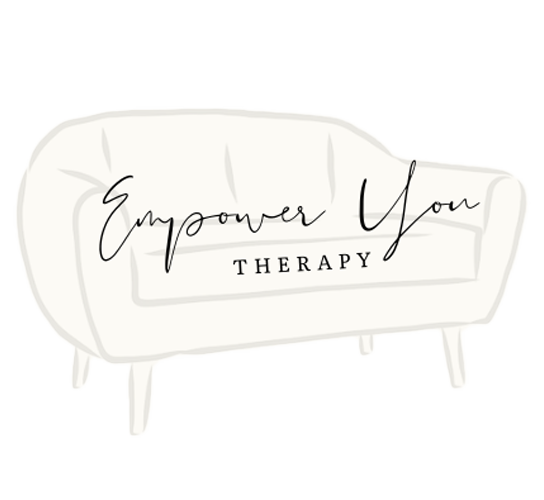If you’re living with Obsessive-Compulsive Disorder (OCD), you know how isolating and distressing the experience can be. The persistent, unwanted thoughts that invade your mind can feel overwhelming, leading you to engage in compulsions that may provide temporary relief but often leave you feeling trapped in a cycle of anxiety and frustration. It’s important to acknowledge that if you’re not ready to start therapy, there are still supportive steps you can take at home to begin easing your symptoms. Remember, you’re not alone on this journey—many people experience similar challenges, and small changes, including incorporating OCD calming techniques, can pave the way toward healing.
Mindful Awareness and Journaling
Start by setting aside a few minutes each day for mindful awareness. Find a quiet space where you can sit comfortably, close your eyes, and focus on your breath. When intrusive thoughts arise, acknowledge them without judgment and gently return your focus to your breath. Mindfulness is an OCD calming technique that can center you amidst chaos. After this mindfulness practice, take out a journal and write down your thoughts and feelings. Reflecting on your experiences can help you gain insight into your triggers and patterns, making them feel more manageable over time.
Incorporating ACT Principles for Healing
You can incorporate Acceptance and Commitment Therapy (ACT) into your daily routine to help you manage obsessive thoughts. Here’s how:
- Values Clarification: Spend time identifying your core values. What truly matters to you in life? Write these down and keep them visible.
- Mindfulness Practice: Dedicate a few moments each morning to sit quietly and observe your thoughts without attempting to change them. Remind yourself that thoughts do not define you; they are just passing experiences.
- Commit to Action: Choose one small action aligned with your values that you can commit to each day, whether it’s reaching out to a friend, engaging in a hobby, or volunteering.
By integrating these practices into your life, you can gradually develop a greater sense of psychological flexibility and resilience against OCD’s grip by leveraging OCD calming techniques.
Exploring Internal Family Systems (IFS) at Home
Using IFS involves acknowledging the different parts of yourself that contribute to your OCD experience. Here are some steps to practice IFS:
- Identify Your Parts: Sit quietly and think about how your obsessions and compulsions make you feel. Identify the different parts of yourself that may be in conflict (e.g., the part that feels anxious and the part that feels compelled to perform rituals).
- Dialogue: Write a dialogue between these parts in a journal. Ask questions and allow them to express their feelings. This can help you foster self-compassion and understanding.
- Nurture Your Parts: Offer yourself gentle reassurance and support. Recognize that each part has a role in your experience but does not define who you are.
Practicing Exposure and Response Prevention (ERP)
Implementing ERP techniques at home can be a powerful tool against OCD. Here’s how to get started:
- Identify Triggers: Make a list of situations or thoughts that trigger your OCD. Start with those that provoke mild anxiety.
- Create an Exposure Hierarchy: Organize these triggers from least to most anxiety-provoking to create a structured plan for facing them.
- Gradual Exposure: Choose a trigger from the lower end of your list and expose yourself to it. Instead of performing compulsions, practice sitting with the discomfort. Set a timer for a few minutes to tolerate the anxiety and observe how it fluctuates.
- Reflection: After each exposure, take note of your thoughts and feelings in a journal. Over time, you may notice that your anxiety diminishes as you face your fears.
OCD Calming Techniques to Support Your Journey
In addition to the therapeutic approaches outlined, incorporating OCD calming techniques can significantly enhance your ability to manage symptoms. Here are some effective strategies you can consider:
- Progressive Muscle Relaxation: This technique involves tensing and then relaxing different muscle groups in your body, helping reduce physical tension and anxiety. Start from your toes and work your way up to your head, focusing on each muscle group
- Deep Breathing: When anxiety arises, take a moment to practice deep breathing. Inhale slowly through your nose for a count of four, hold for four, and exhale through your mouth for a count of four. Repeat this several times to help calm your nervous system and lower your anxiety levels.
- Grounding Exercises: Use grounding techniques, such as the 5-4-3-2-1 method, to anchor yourself in the present. Identify five things you can see, four things you can touch, three things you can hear, two things you can smell, and one thing you can taste. Grounding techniques can help redirect your focus during moments of distress, serving as effective OCD calming techniques.
- Visualization: Picture yourself in a calm and safe place, such as a beach or a forest. Imagine the sounds, smells, and sensations of that environment to help distract your mind from obsessive thoughts and promote relaxation.
- Progressive Muscle Relaxation: This technique involves tensing and then relaxing different muscle groups in your body, which helps reduce physical tension and anxiety. Start from your toes and work your way up to your head, focusing on each muscle group as you release the tension.
The Path to Professional Support
While these at-home strategies, including various OCD calming techniques, can be incredibly helpful, it’s important to recognize when you might benefit from professional therapy. If you feel that your symptoms are overwhelming or if these self-help strategies aren’t enough, consider reaching out to a therapist who specializes in OCD. At Empower You Therapy, we have an OCD therapist in Utah named Nelson Lee, who is dedicated to helping clients transform their relationship with OCD and regain control over their lives. With his compassionate support and expertise, you can delve deeper into your experiences and work through your challenges in a structured and empowering way.
Remember, you’re not alone in this journey. Embracing the potential for healing and reaching out for help when needed can pave the way for a brighter future. Whether you choose to begin with self-help techniques or seek professional support, know that every step you take brings you closer to reclaiming a life free from the constraints of OCD. Take your first step today!
If you’re reading this and don’t have a therapist already, consider meeting with our expert OCD therapist in Utah, Nelson Lee, today! If you’re ready to take the next step and meet with one of our therapists, reach out here!
Therapist Draper
Therapist Draper. Counseling in Draper Utah, Counseling Draper







